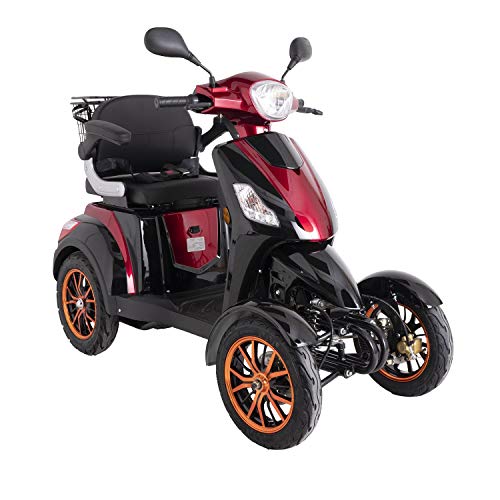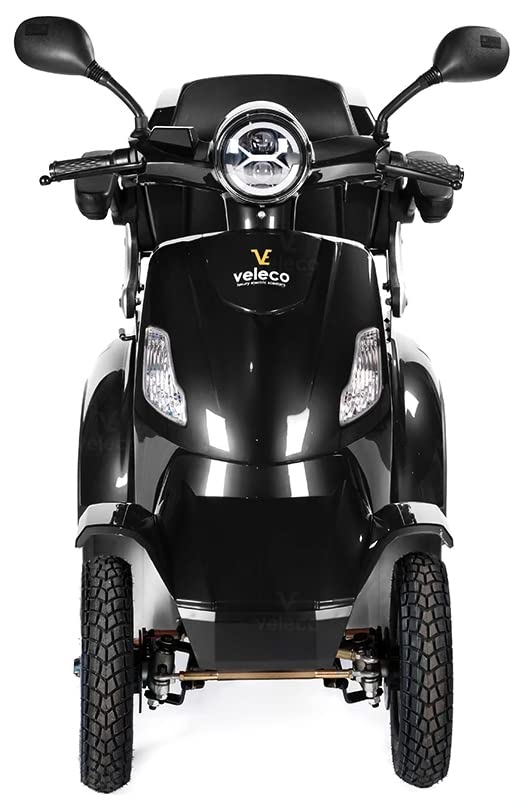10 Basics Concerning Electric Assistive Technology You Didn't Learn At…
페이지 정보

본문
 Electric mobility Scooter Uk Assistive Technology
Electric mobility Scooter Uk Assistive TechnologyOver one billion people need an assistive device, and the number is expected to double by 2030. These devices can be purchased; modified, for instance, adding tennis balls to a walker; or even custom made.
Some examples of assistive technology are pencil grips, ergonomic kitchen tools (such as OXO good grips) and keyboards with specialized features. Other devices, like screen magnifiers, are also considered.
Functional electrical stimulation
Functional electrical stimulation (FES) commonly referred to as functional electrical stimulation, is a procedure that employs small 3 wheel foldable electric mobility scooter charges to stimulate muscles that are either paralyzed or weakened because of an injury such as Multiple Sclerosis or a stroke. The electrical pulses induce the muscle to move normally. This treatment can be used to improve movement, such walking or grasping. It also helps improve the bowel and bladder, as well as reduce the risk of pressure sores.
Electrical stimulation can elicit responses in excitable cells, such as neurons, and has been used for a long time to treat a variety of conditions. Examples include cochlear implant to restore hearing, phrenic pacemakers to aid breathing, and systems that aid in the elimination of bladders by people. It may also help to reduce tremors caused due to Parkinson's disease. Electrical stimulation is delivered using electrodes that can be implanted within the body or they can be placed on the skin without penetration the skin, referred to as percutaneous or noninvasive electrodes.
The intensity of the stimulation can be controlled to produce different results. For instance, the intensity of the stimulation can affect the type of nerve fibers recruited and the fibers that are closer to the electrode being targeted first. The duration of the stimulus is an additional important aspect. This affects the amount of time a muscle is stimulated, which may affect the speed at which fatigue develops.
Although FES can be beneficial in helping someone suffering from injured spinal cord recover functional movements, it isn't for everyone. It isn't appropriate for those who have uncontrolled epilepsy or a cancerous lesion that covers the area of the skin to be stimulated, or who are oversensitive to the sensation of the stimulation. The electrodes are not recommended for those with skin conditions as they could cause irritation or injury to the skin.
Power chairs
Power chairs are a type of motorized wheelchair that utilizes an electric three wheel mobility scooter motor and battery to assist with mobility. They can be controlled by using a joystick or control system, and offer greater independence and accessibility to the world for electric mobility scooter Uk people who are unable to walk. They also let users travel longer distances without having to rely on others for assistance. They can also be adapted to meet the requirements of specific users.
There are a variety of different kinds of power chair that include portable, indoor/outdoor, and mid-sized. Portable power chairs are incredibly lightweight electric folding mobility scooter and fold down to fit into small spaces. They are ideal for use at home, or for shorter distances. Mid-sized power wheelchairs offer the perfect balance between flexibility and endurance. Outdoor and indoor powerchairs are designed to be used outside but they can also be adjusted to indoor conditions. Outdoor and indoor power chairs feature grippy tyres to help with maneuvers on kerbs. They also include a kerb climber.
Assistive technology is a vital tool for those with physical impairments. It ranges from store bought solutions, such as voice recognition software to specialized seating options that enhance the user's satisfaction and independence. The most advanced assistive technology is usually more expensive, however it offers advanced features and customization capabilities that can be ideal for a variety of needs.
It is recommended to seek out advice from a doctor or physical therapist in order to determine the best solution. They can suggest the ideal device for you, help you size it correctly and show how to use it. They will also be able to assist in selecting accessories and integrating the equipment into your daily activities.
Railings
Railings are commonly referred to as handrails. They run diagonally along stairs or ramps. They provide a solid grasping point for those who are navigating the slope. To prevent accidents, the majority of building codes have regulations about the height and spacing of handrails. Handrails are available in a variety of forms and materials. Handrails that are functional and in compliance with ADA regulations have a finger recess either on one side or both. They also need to be sturdy enough to withstand 200 pounds of force.
Handrails can also provide tactile guidance for individuals with visual impairments to aid them in navigating steps. Moving their hands along the railing allows people to feel the number of steps, curves, or landings. Handrails can be used to guide people away from danger in emergency situations.
Electronic pillboxes
The electronic pillbox is a sophisticated device designed to help seniors remember their medications. The electronic pillbox incorporates audio and visual reminders and triple alarms, to make sure seniors take their medications at the right time. This technology can help reduce medication errors, which are a major cause of death for seniors. It can also help avoid fatal overdoses.
The device is made up of a medicine container that has different compartments for each day and times of the week and a sensor powered by batteries with the ability to connect to mobile data worldwide as well as LEDs and speakers to notify users via audio or visual signals when the pills are due. This device is aimed at patients who are taking several medications, vitamin supplements or both, as well as caregivers in hospitals and retirement homes.
In the simplest version the sensors of the pillbox are integrated inside the lid. They monitor the condition of the lids for the subcompartment. The sensors are activated whenever a lid is opened by the user and a message sent to microcontroller. The signal is time-stamped and stored in an internal memory buffer that is circular in the 18LF252 microcontroller.
 The system is designed to be easily programmed using an external Arduino board, which manages every component. The Arduino board will be responsible for emitting sound and light signals for the pillbox to notify the senior that a medication needs to be taken, and wirelessly transmitting the message to caregivers. The acoustic and light signals will stay on for a short amount of time, then bleep every 10 s until the senior has a conversation with the device. The pillbox will then dispensing the pill and the internal speakers and LEDs will turn off.
The system is designed to be easily programmed using an external Arduino board, which manages every component. The Arduino board will be responsible for emitting sound and light signals for the pillbox to notify the senior that a medication needs to be taken, and wirelessly transmitting the message to caregivers. The acoustic and light signals will stay on for a short amount of time, then bleep every 10 s until the senior has a conversation with the device. The pillbox will then dispensing the pill and the internal speakers and LEDs will turn off.- 이전글14 Cartoons About Robotic Hoovers To Brighten Your Day 25.02.05
- 다음글9 Things Your Parents Teach You About Best Drip Coffee Maker 25.02.05
댓글목록
등록된 댓글이 없습니다.



